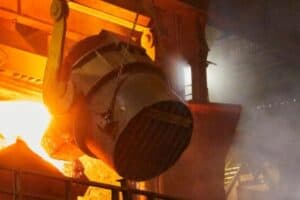Management declared the utility had run out of diesel, having spent double the R6 billion diesel budget.

Eskom is living hand-to-mouth to obtain the diesel needed to continue running its open-cycle gas turbines (OCGTs), which, in the face of prolonged power generation outages, is the only way the utility can stave off severe and ongoing curtailment of South Africa’s electricity supply.
Increase number of breakdowns
In the past two years, Eskom has relied increasingly on the OCGTs because of an increasing number of breakdowns within its ageing coal-fired power fleet.
In the past few months, the OCGTs have become essential with the loss of 4 500MW of generation capacity due to problems at Medupi and Kusile and a life-extension refurbishment at Koeberg nuclear power station.
Eskom chief operating officer Jan Oberholzer said this combined outage equated to about five stages of load shedding. Kusile units 1, 2, 3 and 5, which account for nearly 3 000MW of the amount, will be unavailable until the end of this year.
NOW READ: Man arrested for threatening Eskom COO Jan Oberholzer
The complex life extension of units 1 and 2 at Koeberg will only be complete by March 2024. Medupi unit 4 will only return to service by September 2024.
Add this large, combined outage to the existing power generation gap of 4 000 to 6 000MW declared more than three years ago – which has still not been addressed – and it is clear South Africa is on the edge of an electricity emergency.
Double budget spent on diesel
Eskom’s management team drew the ire of government in November 2022 when it declared the utility had run out of diesel, having spent double the R6 billion diesel budget for the financial year.
When no funds from Treasury materialised, Eskom chief financial officer Calib Cassim scraped together R1.5 billion to buy 50 million litres of diesel.
That provided enough diesel to keep the OCGTs running as needed through December 2022. As the fuel ran out, Cassim came up with yet another R1.5 billion from Eskom’s coffers for a further 50.4 million litres.
According to Oberholzer, this should last until the end of January 2023.
“We need at least – and this is based on certain assumptions – an additional 200 million litres of diesel to take us towards the end of March 2023. It may be less and it may be even more, it all depends on what’s going to happen in respect of unplanned breakdowns.”
Cassim said this would cost Eskom another R6 billion. When added to the eleventh hour R3 billion he has just coughed up and the previous diesel spend of about R12 billion, the utility’s diesel spend for the full financial year 2022-23 will amount to about R21 billion.
Government is upset
This is much more than double that of the 2021-2022 financial year, when Eskom spent R8 billion on diesel. Government is upset by the financial and political consequences.
Finance Minister Enoch Godongwana declared in Davos on 16 January: “I don’t think Eskom has a diesel problem, I think it has a management problem.”
Despite the prohibitive cost of diesel, the consensus is that the burden of severe load shedding on the economy is much higher.
Based on 11 797 GWh (gigawatt hours) of unserved electricity in the 2022 calendar year calculated from load shedding data from the app EskomSePush, and a very low assumption of R10/ kWh for unserved energy suggested by Eskom, the total cost to the economy during the year would have been R115 billion.
This does not account for the longer-term impacts of lost opportunities on business, industry, agriculture and investment generally– and the money spent by households, business and industry on backup power systems.
Taking this into account, the cost of unserved electricity is much higher. At R50/kWh or even R85/ kWh, the cost to the economy in 2022 is more like R590 billion or R1 000 billion.
Situation worsened with load shedding
The worst-case scenarios began to rear their heads when Eskom was implemented stage 6 load shedding on 11 January after 11 generation units broke down.
There are suggestions in the ANC that Eskom is deliberately implementing load shedding to scupper its chances in the 2024 election. Eskom is peering into an abyss.
Its second batch of diesel will run out at the end of January and the board is looking for cash to keep the OCGTs running until the new financial year on 1 April.






